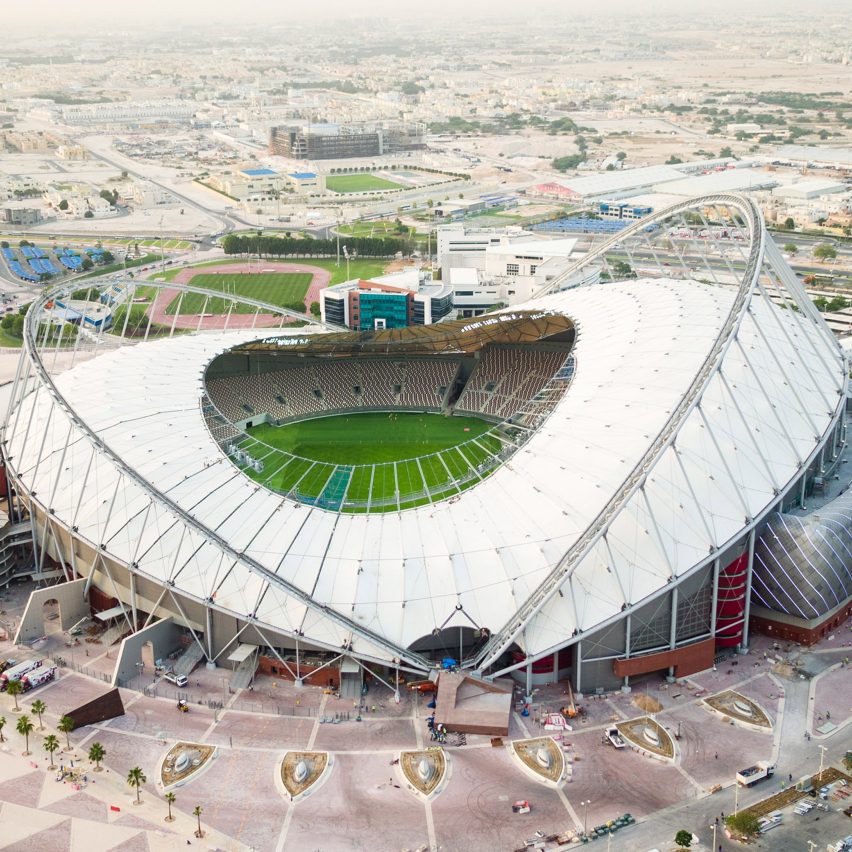
The Khalifa International Stadium in Doha has been renovated for use as one of eight venues that will host the upcoming FIFA 2022 World Cup tournament in Qatar.
Inaugurated in 1976, the country’s national stadium has been revamped by its original architect Dar Al-Handasah so that it could be used for the tournament, which begins later this month.
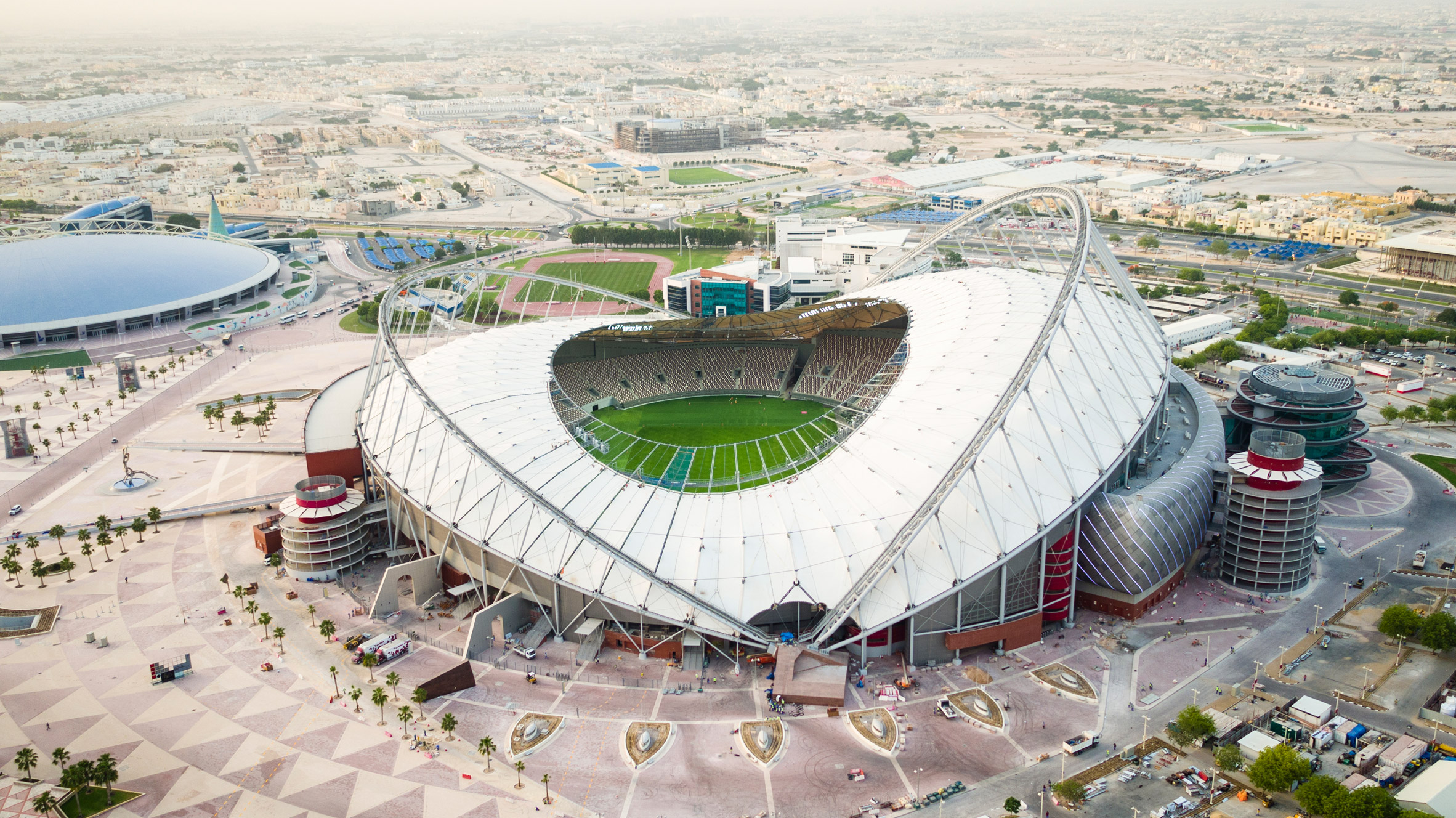
The extensive renovation of Khalifa International Stadium was completed in 2017 and involved the addition of 12,000 seats, bringing its capacity up to 40,000 to meet FIFA‘s hosting standards.
It was the first stadium to be ready for the FIFA 2022 World Cup and will host matches up to and including the third-place play-off.
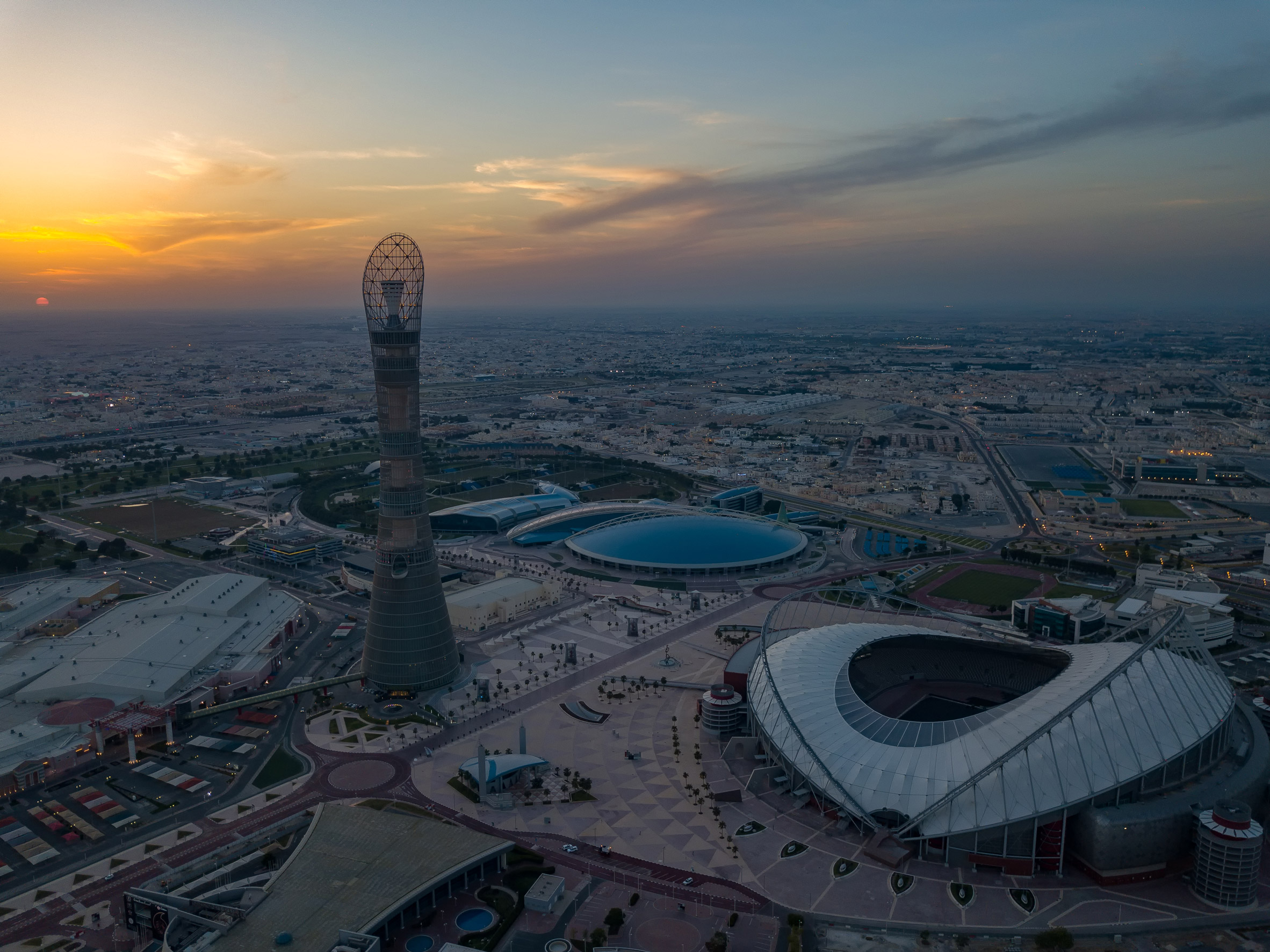
Alterations to the exterior of the stadium include the addition of a canopy, which stretches out between the two arches over its roof – the building’s most identifiable feature.
This has been introduced to help keep fans and players cool in the stands and on the pitch during the tournament, in tandem with the stadium’s new and modernised cooling system.
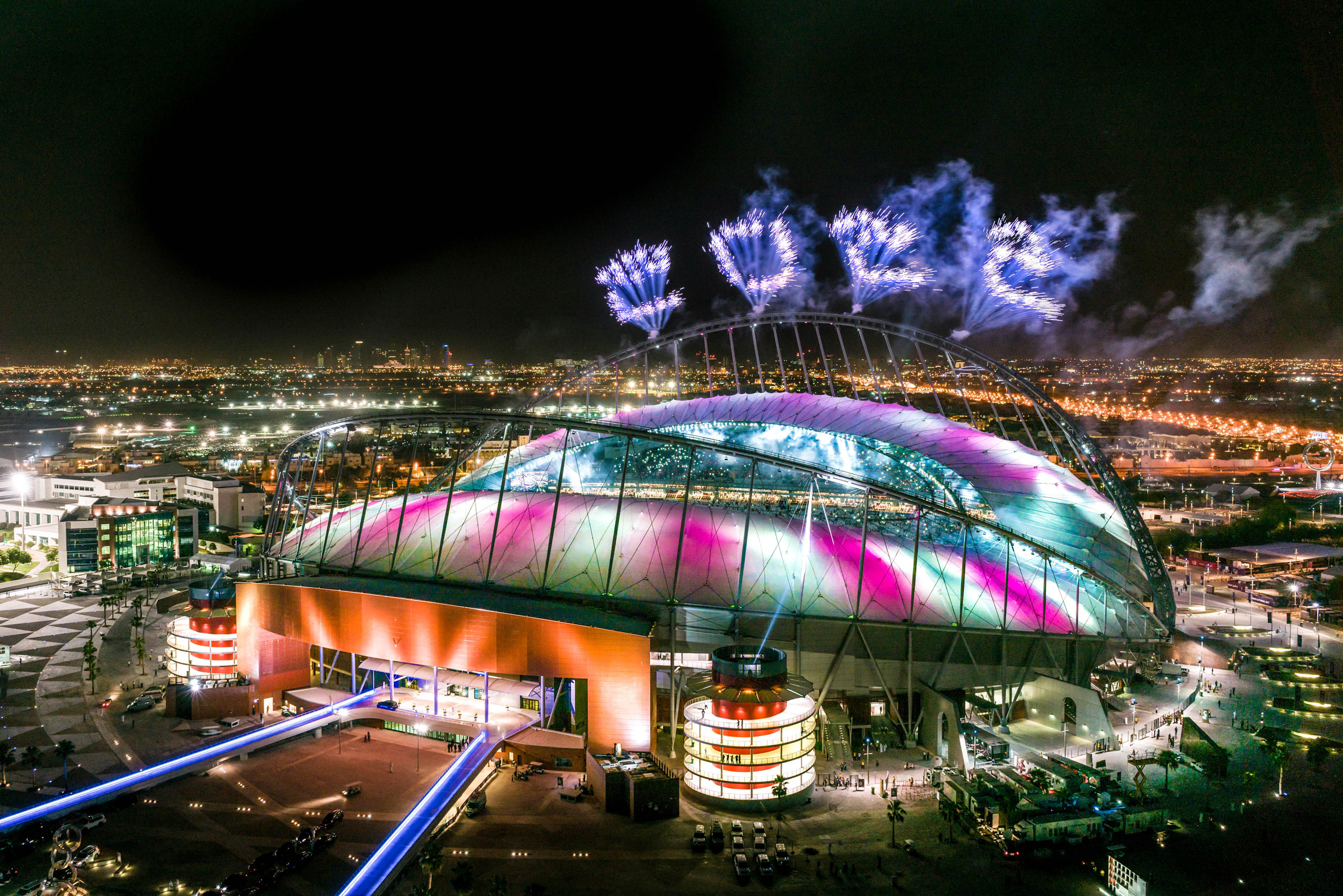
Other exterior changes to the building include the update to its facade, which has been modernised with contemporary digital lighting to animate it at night during the tournament.
Inside, major changes to the stadium include the addition of 12,000 seats in its upper tiers. A number of hospitality facilities have also been introduced.
Since opening in Doha 46 years ago, the Khalifa International Stadium has hosted a number of major events including the Arabian Gulf Cup, the Asian Games and the IAAF World Athletics Championships.
It is located 10 kilometres from Doha’s city centre and forms part of the Aspire Zone – an area created for the 2006 Asian Games that also includes a park, aquatics centre and multipurpose sports hall.
Other stadiums that have been completed for the World Cup include the Lusail Stadium by Foster + Partners and the Al Janoub Stadium by AECOM and Zaha Hadid Architects.
The Khalifa International Stadium architect Dar Al-Handasah has also created the Al Bayt Stadium, which is informed by bayt al sha’ar – tents used by nomadic people in Qatar.
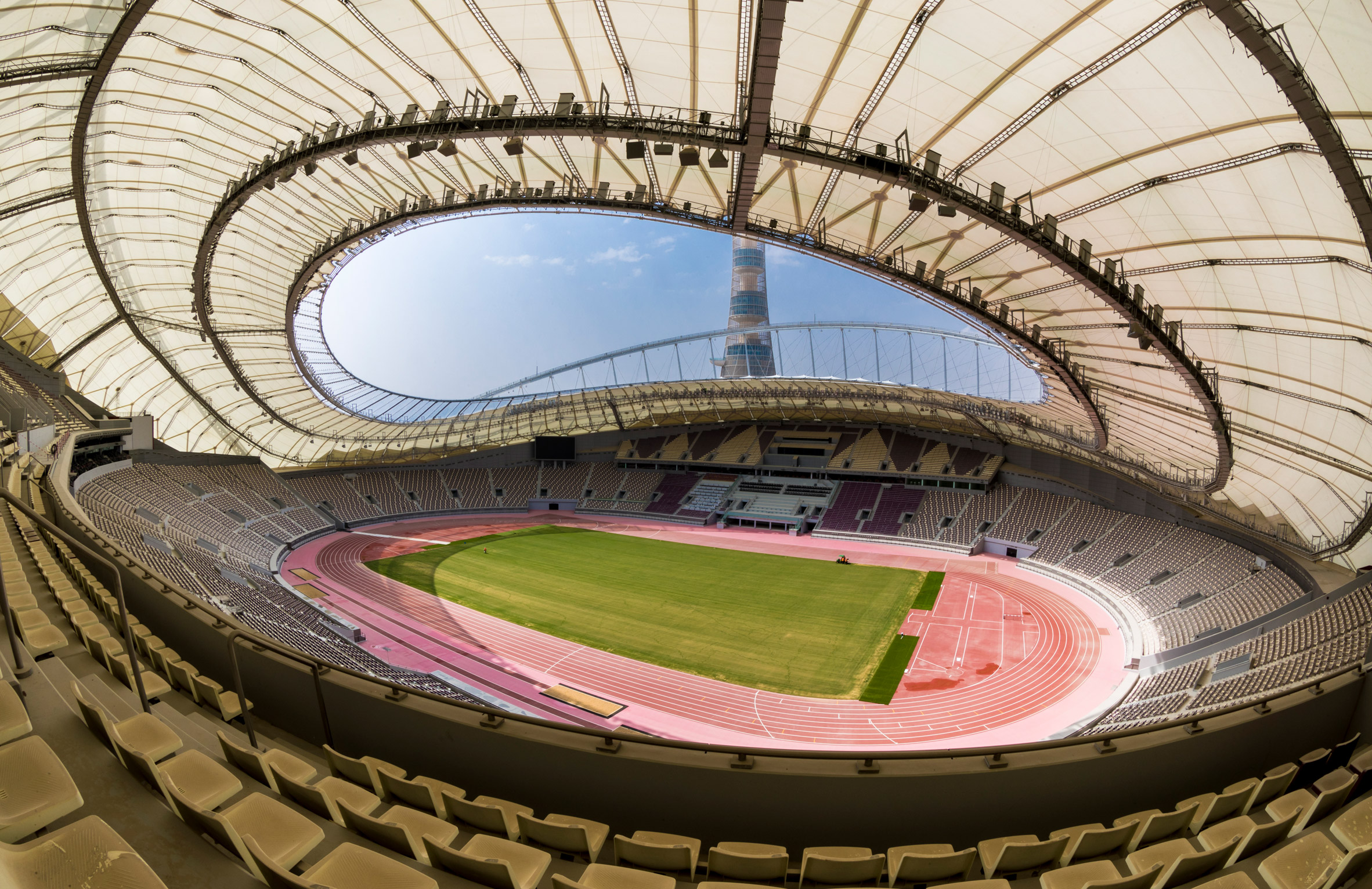
Qatar has been widely criticised for its creation of these stadiums, due to the poor working conditions experienced by the migrants who have built them.
In 2021, the Guardian reported that 6,500 migrant workers had died in the Qatar since it won the right to host the event. According to Amnesty International, thousands of these deaths still remain uninvestigated.
Denmark recently revealed its kits for the World Cup, which are designed as a “protest against Qatar and its human rights record”.
The tournament has also come under fire over claims made by its organisers that it will be the “first carbon-neutral FIFA World Cup in history”.
A report released by the non-profit advocacy group Carbon Market Watch described these claims as “far-fetched” after finding that the emissions from the new venues are up to eight times higher than those outlined in the event’s own carbon calculations.
The post Qatar's national stadium revamped ahead of FIFA 2022 World Cup appeared first on Dezeen.
